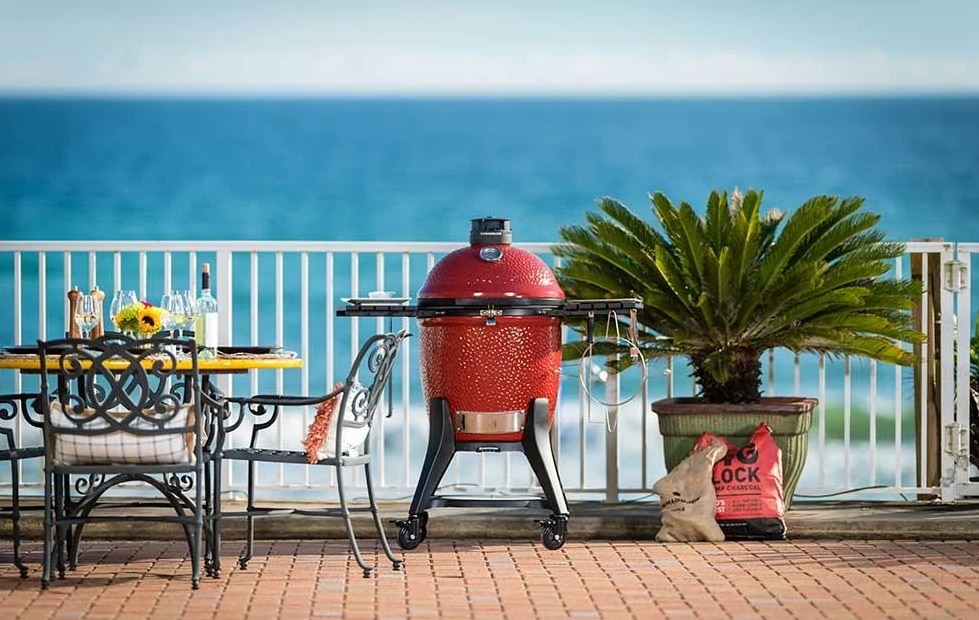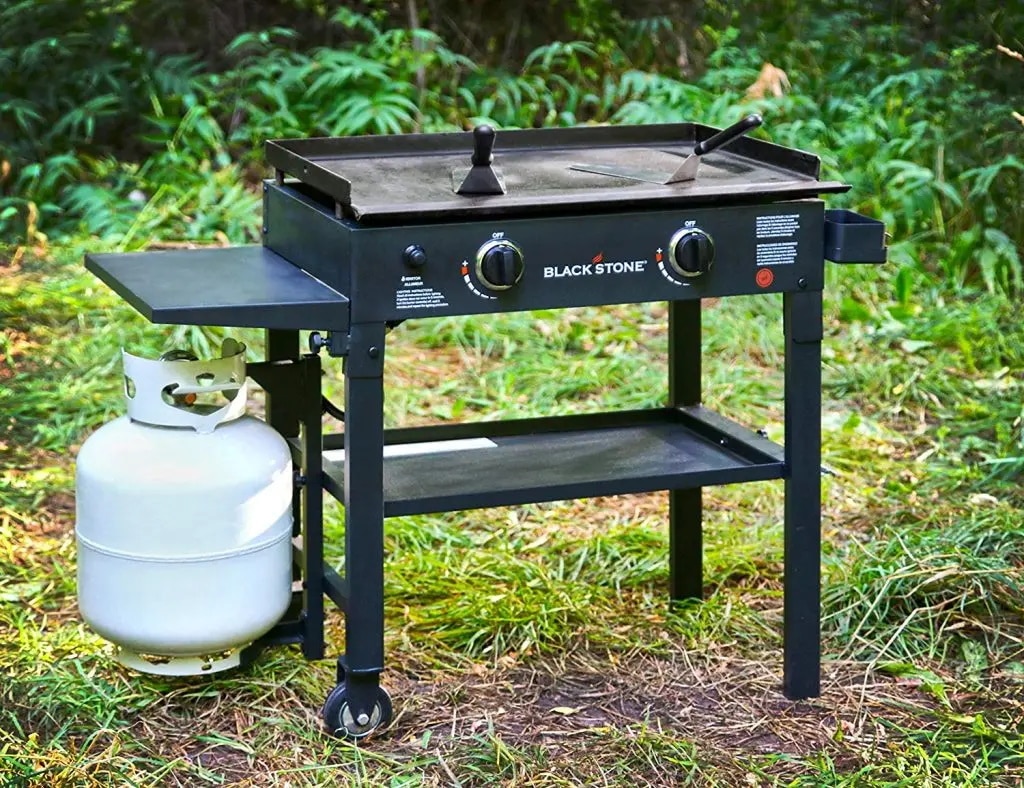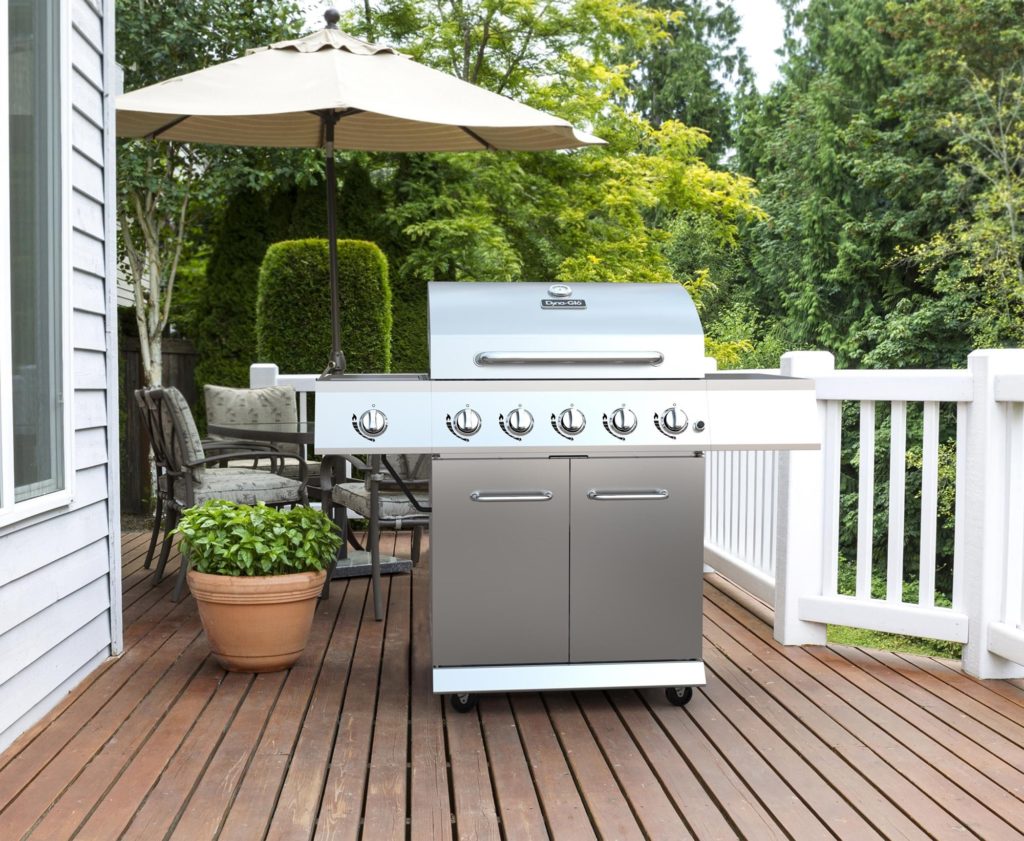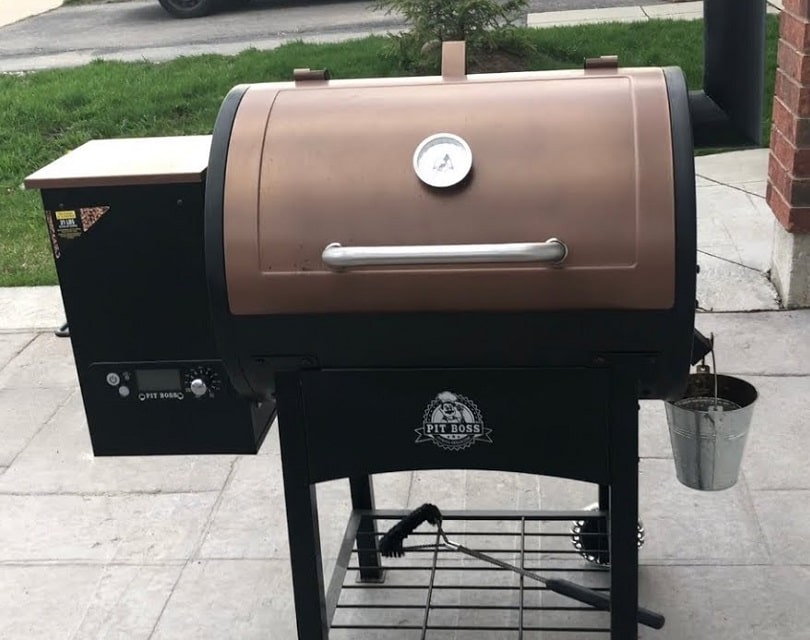

Whether you’re out on a road trip, camping in the backcountry, or spending the evening on your boat, there’s nothing like having a grill along with you for dinner. With a portable grill, you can enjoy an old-fashioned barbecue anywhere your travels take you. The best portable gas grill is just as capable for grilling as your standard home grill, but with a few important changes to the design to make it easier to move around.
In order to help you find a portable gas grill for your adventures, we considered a number of features of these cooking implements. First, we of course looked at the sizes and weights of different grills – a smaller and lighter grill will almost always be easier to transport, after all. Also, we considered the number of BTUs each one offers Finally, we looked at how much cooking area different grills offer.
We spent around 50 hours researching technical specifications from portable grill manufacturers and poring over reviews from outdoor chefs who have used these grills. The result is our pick of the 6 best portable gas grills, highlighted in the table below. Continue reading for detailed reviews of each grill, complete with pros and cons. Our buying guide covers everything you need to know about choosing the right portable gas grill for your needs. Finally, we sum up our three overall favorite barbecues for every trip.
More features: Accu-Probe temperature gauge, Instant Jetfire ignition, folding legs, dual stainless-steel burners
This portable propane grill from Napoleon isn’t cheap, but it comes packed with premium features to give you the ultimate grilling experience on the go. To start off, this grill is truly portable. It weighs just over 15 pounds and is under two feet long. However, it doesn’t sacrifice cooking space at all thanks to the excellent folding design – the grill sports 285 square inches of space, which means you can cook for the whole family. Users also loved the folding legs, which allow you to prop up the grill on a picnic table at camp.
The grill is capable of putting out 12,000 BTUs of heat, which puts in the top tier of portable gas grills. An integrated Accu-Probe temperature gauge ensures that you always know what temperature your food is cooking at, and the lid allows you to cook meats thoroughly without charring. Users were also quite happy with the built-in igniter, which works reliably and means you don’t have to fiddle with matches to get your grill going.
The grill is constructed with two stainless steel burners, and you get dual temperature control knobs so you can vary the heat across the grill. That’s even better for cooking larger meals, since you can cook all your food at once on opposite sides of the grill.
The only minor complaint that users had about this grill is that the inside space with the lid down is only about four inches tall. Napoleon does make a model with twice as much interior height, but it adds an extra five pounds of weight to the grill as well.
More features: 2 adjustable burners, SwapTop interchangeable cooktops, InstaStart ignition
This impressive little propane grill from Coleman is our top pick for camping. It puts out 11,000 BTUs of heat and offers a whopping 225 square inches of cooking space, which together make it suitable for serious grilling endeavors. Better yet, it has two burners that can be independently adjusted so you can cook different types of food on either side of the grill.
One of the features that we liked even more is that Coleman sells interchangeable cooktops for this grill. That means you can easily swap in a stovetop base over the burner and use the grill for boiling water or cooking eggs, as well as grilling. Since the interchangeable cooktops are designed to take up half the grill, you can use two totally different cooking methods and different heats on either side of the grill.
We’ll admit that this grill is a little bit larger and heavier than we’d ideally like for camping. At 25 pounds, it’s pushing the weight limit for a single person to carry it. It’s also 28 inches wide, which can make it hard to stow in your trunk. However, we and users liked that the case includes an integrated carrying handle and the profile of the grill is rather slim.
Just keep in mind that this design also means you effectively can’t cook with the lid down. This isn’t a problem for most people who want to take advantage of this grill’s multifunctionality. But, if you want a dedicated grilling unit, you’ll probably want a model with a lid.
More features: built-in lid thermometer, folding side tables, infinite control burner valve
This grill from Weber is a top contender for the title of overall best portable gas grill. It offers 12,000 BTUs of heat and 280 square inches of cooking area, putting it on par with our Editor’s Choice Napoleon grill.
The grill features built-in side tables that flank the grill on either side and fold down for transport. That’s a help if you don’t have a camping table, but the feature may be less useful if you’re working at a picnic table or otherwise off the ground. Users also liked the built-in lid thermometer, which allows you to see what temperature the grill is at so you can always cook your food to perfection. A built-in igniter to save you from having to find matches is also a major plus for this grill.
The main thing that turns us off from this grill is its size and weight. The grill weighs a whopping 42.5 pounds – it’s really at the edge of portability for one person, and you’d be much better off carrying it with two people. Unfortunately, Weber also didn’t seem to plan for it being carried. Users note that there are no easy handles to lift this grill by. On top of that, we’d have to put it behind the top-rated Napoleon and Coleman grills because it lacks dual temperature controls.
More features: built-in lid thermometer, folding side tables, infinite control burner valve
This gas grill is the smaller brother of Weber’s Q2200, and it’s perfect for cooking for two people rather than a whole family. The design of the Q1200 is largely the same, with two folding side tables on either side of the grill and a built-in thermometer in the lid so you always know what temperature your food is cooking at.
As for the Q2200, the main issue we and users have with this grill is portability. At 29 pounds, it’s just on the edge of what one person can comfortably carry. On top of that, the legs don’t fold away and there’s no convenient handle to carry the grill by, so picking it up can be kind of awkward. That said, we did like that the grill is overall compact enough when the side tables are folded down to stow in the back of any car.
For the premium price of this grill, we were also less than impressed with its performance. The grill only puts out 8,500 BTUs of heat, which is significantly less than the cheaper Coleman RoadTrip 225 gas grill.
Still, users were very happy with using the grill in the field. They found that Weber’s add-on roasting tray saves a ton of mess when cooking drippy items like bacon. The grill also holds its flame very well in high winds, which ensures that weather is never a problem for cooking dinner.
More features: TRU-Infrared cooking system, hood-mounted temperature gauge
This unique infrared grill from Char-Broil uses propane as its primary fuel, but uses infrared heat for the majority of its cooking. There are some interesting advantages to the TRU-Infrared cooking system. First, it uses less fuel – you can stretch one of the small one-pound propane canister for several days of use. In addition, since there are no flames, infrared cooking helps lock in juices in meats and allows them to cook more evenly throughout.
Still, there are some downsides to this type of cooking. It’s significantly different than cooking with a standard propane grill, so you’re liable to over- or undercook your first few dishes with it. While infrared cooking theoretically allows for a wider range of temperatures than standard gas grilling – and this grill comes with an integrated thermometer – it can be hard to get the temperature where you want it without simply opening and closing the lid. Unfortunately, there’s no control dial to change the propane flow.
As for the grill itself, users were overall quite happy with it. The 9,500 BTUs may seem on the low side, but this is perfectly okay for cooking with infrared heat. While users would have liked to have a bit more than 200 square inches of cooking area, they found that it was plenty when cooking for just two people.
The grill is also relatively compact, although portability could have been improved if the legs were designed to fold down. At 20 pounds, it should be easy enough for one person to carry.
More features: folding table base, lid latch
This inexpensive gas grill from Cuisinart is relatively light on features, so we’d primarily recommend it for users on a budget who want to stick with propane rather than charcoal. The biggest drawback to this portable grill is that it only produces around 5,500 BTUs of heat. That means cooking thick meats like steaks is largely out of the question, although users note that it has no problem handling simpler foods like burgers and hot dogs.
On top of that, the grill is pretty small. It offers just 145 square inches of cooking space, the least of any portable grill we reviewed. It’s ideally suited for one or two people, but it will struggle to cook even for three people at the same time.
Users did like the relative portability of this grill. It’s only 18.5 inches wide and weighs just 17 pounds, so it’s easy for a single person to carry it and even easier to stuff in the trunk of your car. The legs fold down and the lid can be latched closed, which is a nice design on the part of Cuisinart for carrying.
One thing that’s worth noting about this grill is that it comes with a porcelain enameled cooking grate. That means that even though it doesn’t put out a ton of heat, you can easily create distinctive grilling lines on your food when cooking on full power.
Portable grills are good for a huge variety of outdoor adventures and are used by RVers, campers, boaters, and more. As a result, there’s a huge diversity of portable grills on the market today, each boasting different features and different benefits for your cooking. Choosing the right grill for your needs can be tricky, which is why our buying guide will cover everything you need to know about these portable cookers.
If you’ve ever been away from home and dreamed of cooking meat or vegetables for dinner but couldn’t because you didn’t have a grill, a portable grill is for you. These grills are ideal for camping, especially if you’re on a road trip or RV tour. They’re small enough to pack away in your vehicle, and fast and easy to setup anywhere when it comes time to make dinner.
In addition, portable grills can add some variety to a picnic and get the party started at a tailgate. Even boaters can take advantage of portable grills – there’s nothing better than grilling up the day’s catch right out on the water.
Portable grills aren’t just limited to travel use, either. Apartment dwellers with limited outdoor space – think tiny backyards and enclosed porches – can make the most of their space with a portable grill. That way, you have the option to grill when you want it, but you don’t necessarily need to have a large grill taking up your entire porch even when you’re not cooking.
In order for a grill to be truly portable, it needs to be easy to move around – not just technically not permanently mounted into the ground. That means that large grills designed for home use, which often weigh over one hundred pounds, aren’t going to be considered portable even if they’re mounted on wheels.
Instead, portable grills are typically on the order of 10–50 pounds. Lighter grills like the Cuisinart and Napoleon ones can be carried by a single person.
Size is also important – you want your portable grill to be able to fit in the back of your car or in the compartment of your RV or boat without taking up all of your valuable space. Many of the portable stoves we reviewed are quite compact, keeping all dimensions under two feet. Some larger grills, like the Weber Q1200 and Q2200, actually fold down to save room during storage. Watch out for cylindrically shaped grills which can be hard to fit in confined spaces.
Finally, it’s important to think about ease of use when choosing a portable grill. If you’re relying on your grill to cook dinner, it needs to be relatively straightforward to get it running and keep it at the proper temperature. Propane grills typically offer the best ease of use, since all you need to do to start your grill is to connect your propane tank, open the fuel valve, and light the gas. Typically, propane grills also allow you to control the flame level. Charcoal grills, on the other hand, can be difficult to light and require some patience before you can start cooking.
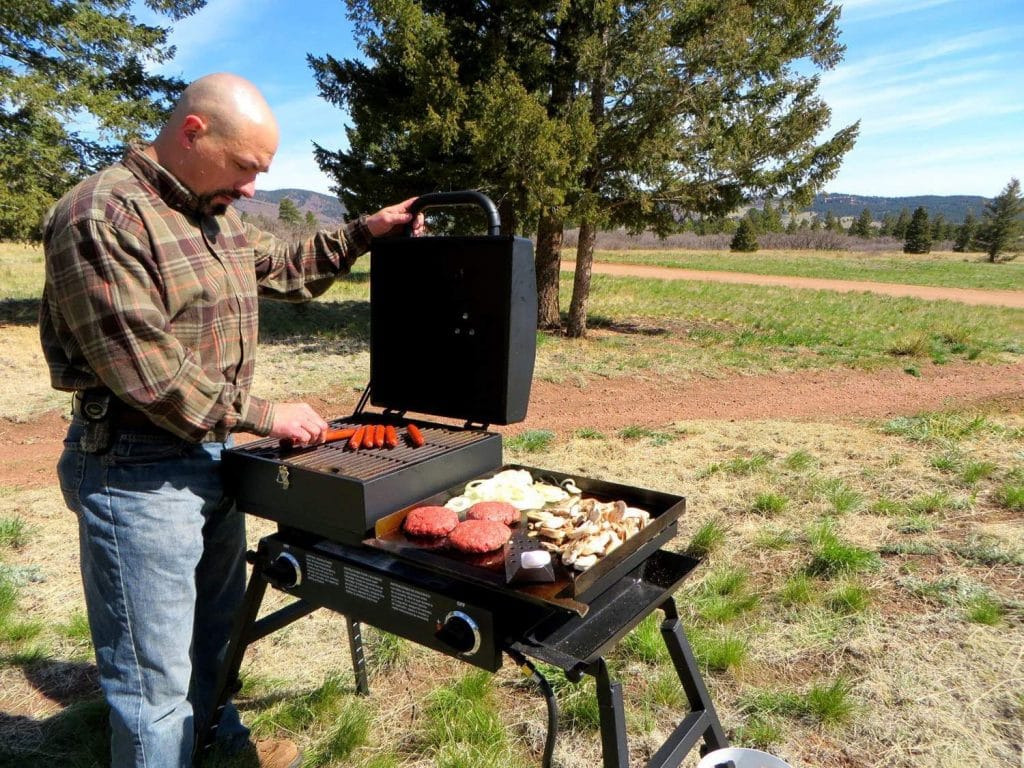
While your grill at home might use charcoal, propane, or natural gas, portable grills are typically designed to burn either propane or charcoal. These two fuel sources each have advantages and disadvantages, which can play a big role in what type of grill you decide to go with.
The vast majority of portable grills use propane. That’s because burning propane is easy – you can get started cooking instantly since all you need to do is turn on the gas and ignite the grill. There’s no waiting time, and you can use a control knob to turn the heat up or down depending on what you’re cooking. When you’re done, there’s no mess to cleanup beyond the cooking grate since propane doesn’t leave any traces behind in the bottom of your grill.
That said, there are some drawbacks to grilling with propane. Propane gas doesn’t burn nearly as hot as charcoal. So, if you’re looking to sear meats or need high cooking temperatures, you’ll need to pay extra for a grill with a high heat output like the Coleman, Weber Q2200, or Napoleon grills. In addition, many grillers miss out on the smoky flavor that charcoal imparts to food, especially meats, when cooking with propane.
The other downside is that propane grills tend to be more expensive and larger than their charcoal counterparts. That’s because where charcoal grills can essentially be a metal dish that holds the charcoal in place, propane grills need to route the gas through designed burners. That requires a bit more engineering, which can push up prices.
Charcoal is the classic fuel for grilling. It burns extremely hot so you achieve a style of cooking for meats and vegetables that’s hard to replicate any other way. Charcoal also imparts a smoky, woody flavor to your food that many grillers long for. Therefore, we’ve included some charcoal models on our list.
That said, there are a lot of reasons why some travelers tend to avoid charcoal. First, it’s more expensive than propane. If you grill a lot during the summer, the cost of charcoal can add up quickly. It also goes stale quickly if you’re in a humid environment, which means additional costs to replacing last summer’s charcoal.
An even bigger downside to charcoal is that you have to plan well in advance for dinner. Charcoal can be difficult to light, often requiring lighter fluid that can be dangerous if not handled properly. Once it’s lit, you need to wait 20–30 minutes for the charcoal to burn down to ashes before you can even start cooking. Start too soon, and you’re likely to end up with gray ashen flakes all over your food.
Finally, you’ll have quite a bit of cleanup to do when you’re done cooking. You need to wait for the charcoal to burn itself out or to douse it with water, and then remove the charcoal ashes from the grill. If you’re camping in the forest, it’s extremely important to make sure that your charcoal is dead out and that you don’t spread embers when cleaning your grill.
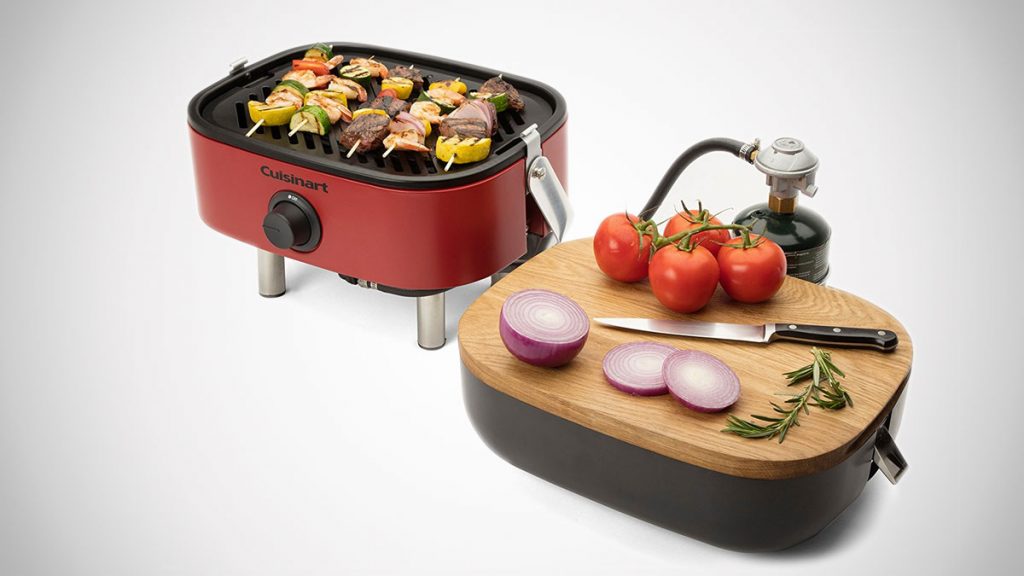
Portable gas grills don’t output nearly as much heat as charcoal grills, so it’s important to look closely at how much heat your grill can actually put out. Heat is typically measure in British thermal units (BTUs), and grills with more BTUs will burn hotter – which gets you closer to achieving true grilling like you’d get with charcoal.
Portable gas grills range quite a bit in their heat outputs. Some, like the Weber Q2200 and Coleman and Napoleon grills, are capable of putting out an impressive 12,000 BTUs. Cheaper grills, like the Cuisinart model, may put out less than half that. Generally, more heat is better as long as the grill fits within your budget.
The majority of portable gas grills only have a single burner or heating element in order to save space in the design. But some grills, like the Napoleon and Coleman models, have two heating elements. In that case, you’ll certainly want two control knobs so you can control the heat on the two burners independently of one another. That gives you more flexibility for cooking two different types of food on opposite sides of the grill at the same time.
Every propane grill is capable of accepting a typical propane attachment. But if you’re on the road, chances are you’re going to use one of the ubiquitous green one-pound liquid-propane canisters at some point. These canisters are lightweight, inexpensive, and available at most grocery and hardware stores.
So, make sure that whatever gas grill you get has a coupling for these one-pound canisters. All of the propane grills that we reviewed come ready to use with them.

Many gas grills are constructed with a cast aluminum body. It resists heat well and is relatively durable, yet is also fairly lightweight. Depending on how premium your grill is, you may get either a steel grate or a cast iron cooking grate – the latter being the favored material because it leaves distinct grilling marks on meats and vegetables.
The size of the cooking area in large part determines how much food you’ll be able to cook at one time. A larger cooking area naturally requires a larger – and probably heavier – grill, so there’s a natural trade-off between area and portability. Most people will find that between 150-200 square inches of cooking area is plenty of space to cook a meal for two people. But, if you’re cooking for a whole family, you may need a larger grill like the Napoleon or Weber Q2200 grills.
Prices for portable grills can vary widely depending on the type of grill and what features it offers. Our Editor’s Choice Napoleon grill, for example, is an extremely premium grill and retails for over $400. Typically, you can get a good portable charcoal grill for under $100 and a quality gas grill for between $150 and $250 dollars.
Our three overall favorite portable grills on the market today are the Napoleon TQ285-BL, the Coleman RoadTrip 225, and the Weber Q2200. All three of these grills are gas-powered, and all offer at least 11,000 BTUs of heat output at full power.
We liked the Weber grill because it comes with folding side tables and an integrated thermometer in the lid. However, it lacks dual zone temperature controls like the Coleman and Napoleon grills have, and is quite heavy for a portable grill.
For the price, the Coleman grill represents an incredible value and allows you to swap out cooktops so you can use it as a stove as well as a grill.
We feel the Napoleon grill is the overall best portable grill for the majority of users. It offers a whopping 285 square inches of cooking space, two temperature controls, and weighs just 15 pounds thanks to the inventive folding design.

